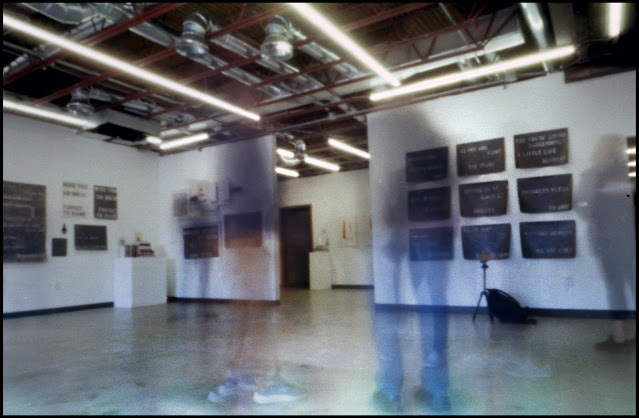The last Populist template with the new internal structure that needed to be checked was the 60mm.
Occasionally we receive an issue of 31 Rue Cambon, Chanel's semi-annual journal. This one's cover was made from unusually thick and stiff cardstock with a penetrating gaze prominenty featured. In the past in order to spread an image across the whole front of the camera, it took two copies, one for the camera body, and one for the shutter. We only received one copy of this issue. If the shutter covered the entire front of the camera, I realized it would be simple to make the cutouts for the shutter and shutter handle and keep the image whole.The camera back used a similar scheme with the inside back cover giving the camera a name. In the snowy springtime in Wisconsin it seemed appropriate.
A rather extravagant material. These magazines can go for twenty bucks on eBay.
I would draw a lot of attention trying to do this in a public place, and most likely be in the way. At home I could probably find nine photographs I've already done of each room. Sarah's studio is one place I don't spend much time in. When I go in to borrow the Nikon or some other tool, I always end up getting distracted looking at some artifact on display. It was the perfect inspiration for both the camera and the challenge.
In addition to it being a pretty tight space for a tripod, it's a bit dim for pinhole. I had seen the small, practically weightless, inexpensive USB powered LEDs that can be mounted on a camera's accessory shoe. Not a lot of light in the pinhole world, but I was planning on using it rather close up. It was a little harsh so I attached a milk bottle for a diffuser to it with rubber bands, and mounted it on a boom mic stand so it could be positioned from behind the tripod. That reduced the exposures from an hour and a half to five or ten minutes, although a few were long exposures with just the room lights.The shelves are full of objet d'art and artist's supplies.
A mug full of tools.
I haven't decided what I'm going to do about the 3x3 grid. They may just get a 4x3 grid to better align with my 120 film.
Coco Neige has a .30mm hand drilled pinhole 60mm from a 6x6cm frame. The film is Lomography 400 developed in Cinestill's Liquid Quart C41 kit.


























































